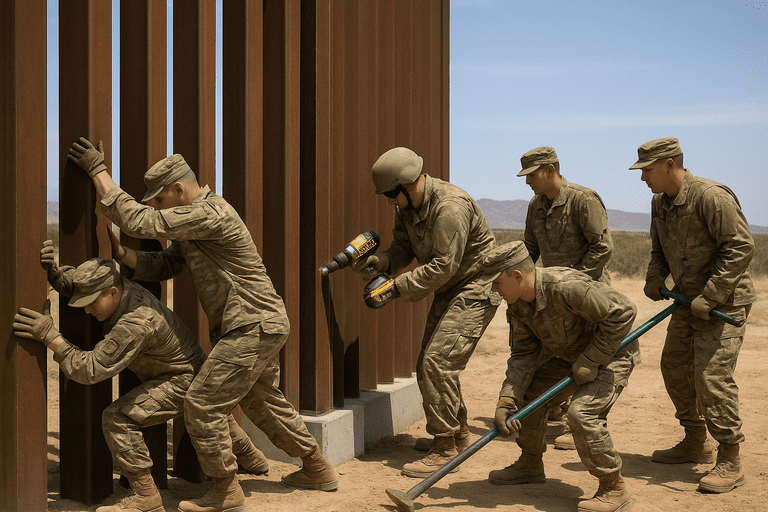In recent months, the Trump administration has implemented a series of measures aimed at securing the U.S.-Mexico border. These actions have led to a significant decrease in unlawful crossings and have introduced new protocols for handling migrants.
On January 20, 2025, President Donald J. Trump declared a national emergency at the southern border, directing the Department of Defense to increase military presence. This move resulted in the deployment of approximately 9,000 active-duty troops, including a 4,400-soldier Stryker brigade combat team and a 650-troop general support aviation battalion. These units have been instrumental in installing physical barriers and providing surveillance support to Customs and Border Protection (CBP). The collaboration between military forces and CBP has reportedly led to a 94% reduction in unlawful border crossings, with daily apprehensions decreasing from 4,800 to 285. (defense.gov)
In addition to military deployment, the administration has reinstated the “Remain in Mexico” policy, formally known as the Migrant Protection Protocols. This policy requires asylum-seekers to await their U.S. court hearings in Mexico, regardless of their country of origin. The policy aims to deter unlawful entry and streamline the asylum process. (newsnationnow.com)
Further measures include the designation of certain drug cartels, such as MS-13 and Tren de Aragua, as foreign terrorist organizations. This designation allows for more aggressive prosecution and deportation of cartel members. Additionally, the administration has ended the “catch-and-release” program, which previously allowed individuals who entered the country unlawfully to remain in the U.S. while awaiting court proceedings. (ktsm.com)
To address the detention of high-priority criminal aliens, the administration has ordered the expansion of the Guantanamo Migrant Operations Center (GMOC) at Naval Station Guantanamo Bay. The facility is being prepared to house up to 30,000 migrants. The first group of 10 high-threat migrant detainees, reportedly affiliated with the Tren de Aragua gang, was transferred to GMOC on February 4, 2025. Subsequent transfers have included Venezuelan migrants, with some being held at Camp 6, a military prison previously used for Al-Qaeda suspects. (en.wikipedia.org)
The establishment of military zones along the U.S.-Mexico border in New Mexico and Texas has introduced new legal considerations. These zones allow troops to detain individuals who enter without authorization. However, defense attorneys have raised concerns that migrants and locals may be unaware they are entering restricted areas, leading to legal challenges and calls for clearer boundary markings. (reuters.com)
Homeland Security Secretary Kristi Noem has indicated that the current levels of unlawful immigration could justify suspending habeas corpus, allowing the government to detain individuals without court hearings. This perspective aligns with the administration’s view of unlawful border crossings as a potential “rebellion or invasion” under the Constitution. Legal experts are divided on the legality of such a move, and the decision ultimately rests with President Trump. (reuters.com)
The administration has also appointed Ronald D. Johnson, a former U.S. Army Green Beret and CIA officer, as the U.S. ambassador to Mexico. Johnson’s military background signals a shift in diplomatic relations, emphasizing security cooperation to combat drug cartels and address migration issues. His appointment reflects the administration’s focus on a security-oriented approach to bilateral relations. (ft.com)
While these measures have led to a significant decrease in unlawful border crossings, they have also introduced complexities. The expansion of detention facilities, the establishment of military zones, and the potential suspension of habeas corpus raise questions about legal processes and civil liberties. The administration’s approach underscores a commitment to border security, with the expectation that any challenges will be addressed through increased staffing and oversight. This may result in a more robust governmental framework to manage border operations effectively.
—
Lisa Grant reports on immigration enforcement, border operations, and national security protocols. She studied political science at Arizona State University and previously worked as a legislative staffer on immigration reform. Her reporting brings a field-level understanding of border policy and how it is applied in communities across the Southwest.



